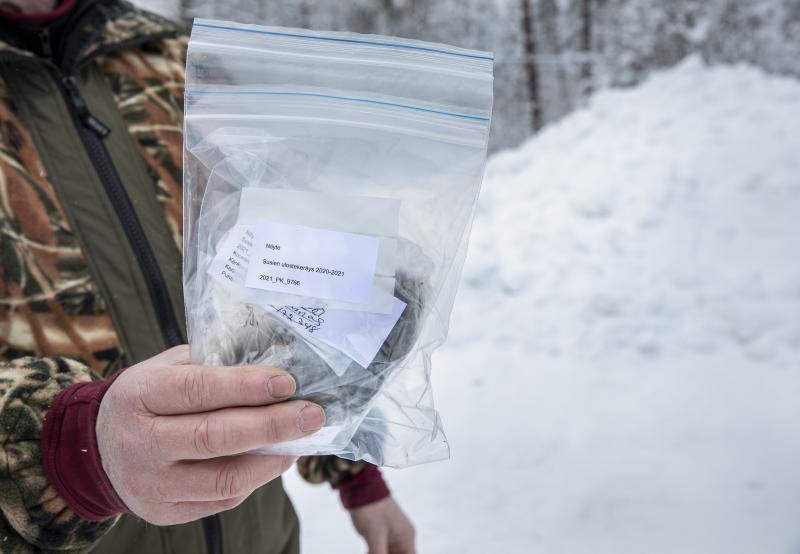Collection and monitoring of wolf DNA samples
DNA reveals information about wolves that cannot be discovered by any other means. Information about the size and spread of the wolf population is useful for the authorities, wildlife management, decision-makers and citizens.
Both researchers and citizens need information about the movement and reproduction of wolves. Where are the boundaries of a pack’s territory? Have new pups been born in a territory? Where has this young wolf come from? Has the same wolf been here before, or is it just passing through? All these questions can be answered using DNA samples.
DNA is usually studied using wolf droppings. Samples can also be taken from wolf urine collected from snow or from bite marks in a victim. Tissue samples can be taken from dead wolves.
In Finland, wolf DNA samples have been collected since 2013, albeit not in all wolf territories.
Goal:
Expanding wolf DNA sampling to almost all permanent wolf territories.
Measures:
- Training was provided for new DNA sample collectors each year.
- Communication on DNA sampling, DNA analyses and their results was increased.
- DNA was analysed using the new and more accurate SNP method.
Results
The number of volunteers increased
Wolf tracks and droppings were sought by fieldworkers from Luke and the Finnish Wildlife Agency, as well as a group of volunteers. To expand the collection of DNA samples, more volunteers were trained during the project. Training for volunteer DNA sample collectors was held annually. In 2020–2024, more than 600 people registered for training, and recordings of training events were watched almost 1,000 times. The percentage of samples collected by volunteers of all samples increased from 20% (in the winter of 2018–2019) to 63–70% (in the winters of 2021–2024).
DNA was collected from roughly 90% of wolf territories
During the project, the wolf population grew, and new wolf territories were formed in Finland. At least one DNA sample was analysed over 86–94% of territories. A total of 5,922 DNA samples was collected during the project.
Communication on wolf DNA sample collection improved
Communication on the network of volunteers, DNA analyses and sample results played a central role in expanding the collection of samples.
Using neutral facts as the basis of wolf dialogue motivated many DNA sample collectors. Furthermore, people want to learn more about wolves living in their home area and about their history. DNA results were summarised annually by territory, and the summary was communicated to local and regional papers especially.
During the project, the Riistahavainnot.fi service was updated with data users. The current Luonnonvaratieto.luke.fi service is used to publish information about the start and end of the sample collection period and present a summary of results in a map service. In 2024, more than 98,000 users sought information about large carnivore sightings and DNA samples on the website.
More information
Cover photo: © Niko Pekonen / Vastavalo

